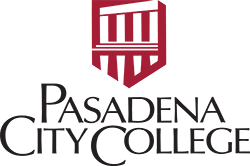Coursework
Prerequisites
The following courses must be completed prior to applying for admission to the program. “In Progress” work for the prerequisites will not be considered during the selection process.
- Intermediate Algebra or higher Math course
- Human Anatomy with a lab component
- Chemistry - General, Organic or Biochemistry
- Human Physiology with a lab component
- Medical Terminology (must be a 3-unit semester course)
- Additionally, all completed with a 2.0 grade point average. See a counselor for detailed course information.
Beginning with the 2022 application cycle:
- The prerequisite courses must be completed with a Grade Point Average of 2.5 with a grade of "C" or higher.
Radiologic Technology Courses
Course Sequence-Beginning in the First Summer Session
- RDTC 100 Introduction to Radiology Technology 2 units Summer 1, Year 1
- RDTC 101 Medical Procedures for the Technologist 3 units Summer 1, Year 1
- RDTC 102 Radiation Protection and Radiobiology 3 units Fall, Year 1
- RDTC 103A Radiographic Anatomy and Positioning 3.5 units Fall, Year 1
- RDTC 110 Professional Ethics 2 units Fall, Year 1
- RDTC 112A Radiologic Physics A 3 units Fall, Year 1
- RDTC 117A Clinical Practicum 1 4.5 units Fall, Year 1
- RDTC 113 Clinical Practicum 3 2 units Winter, Year 1
- RDTC 103B Radiographic Anatomy & Positioning B 3.5 units Spring, Year 1
- RDTC 104 Principles of Radiographic Imaging 3 units Spring, Year 1
- RDTC 112B Radiographic Physics B 3 units Spring, Year 1
- RDTC 117B Clinical Practicum 2 4.5 units Spring, Year 1
- RDTC 119 Clinical Practicum 4 7.5 units Summer 2, Year 2
- RDTC 103C Cross Sectional Anatomy 3 units Fall, Year 2
- RDTC 105 Special Procedures 3 units Fall, Year 2
- RDTC 111 Digital Radiography 2 units Fall, Year 2
- RDTC 117C Clinical Practicum 5 9 units Fall Year 2
- RDTC 113 B Clinical Practicum B 4 units Winter, Year 2
- RDTC 116 Radiologic Technology Review 2 units Spring, Year 2
- RDTC 117D Clinical Practicum 6 7.5 units Spring, Year 2
Electives (must choose one or both below)
- RDTC 121 Mammographic Procedures 3 units Spring, Year 2
- RDTC 123 Computerized Tomography 3 units Spring, Year 2
Sequence of Courses and Units
- Year 1, Summer 1, 5 units
- Year 1, Fall, 16 units
- Year 1 Winter, 2 units
- Year 1, Spring, 14 units
- Year 2, Summer 2, 7.5 units
- Year 2, Fall, 17 units
- Year 2, Winter, 4 units
- Year 2, Spring 12.5 or 15.5 (depending on which elective you choose)
- Total Units: 78-81 units
Program Completion
Upon successful complete of the program students are eligible to take the American Registry of Radiologic Technologist Examination. After successfully passing the American Registry of Radiologic Technologist (ARRT) Examination students are eligible for California licensure. A Certificate of Achievement is awarded upon completion of all required courses with a grade of C or better. Effective January 1, 2015 an applicant must have an Associate or higher degree for eligibility for ARRT certification. The associate degree must be posted prior to taking the ARRT National Certification Exam. Completion of the Radiologic Technology Program does not guarantee state licensure or national certification.
This program is designed to be completed in months.
This program will cost if completed within normal time. There may be additional costs for living expenses. These costs were accurate at the time of posting, but may have changed.
Of the students who completed this program within normal time, the typical graduate leaves with of debt.
License requirements:
For more information about graduation rates, loan repayment rates, and post-enrollment earnings about this institution and other postsecondary institutions please click here: www.collegescorecard.ed.gov.
This program has not passed standards established by the U.S. Department of Education. The Department based these standards on the amounts students borrow for enrollment in this program and their reported earnings. If in the future the program does not pass the standards, students who are then enrolled may not be able to use federal student grants or loans to pay for the program, and may have to find other ways, such as private loans, to pay for the program.
